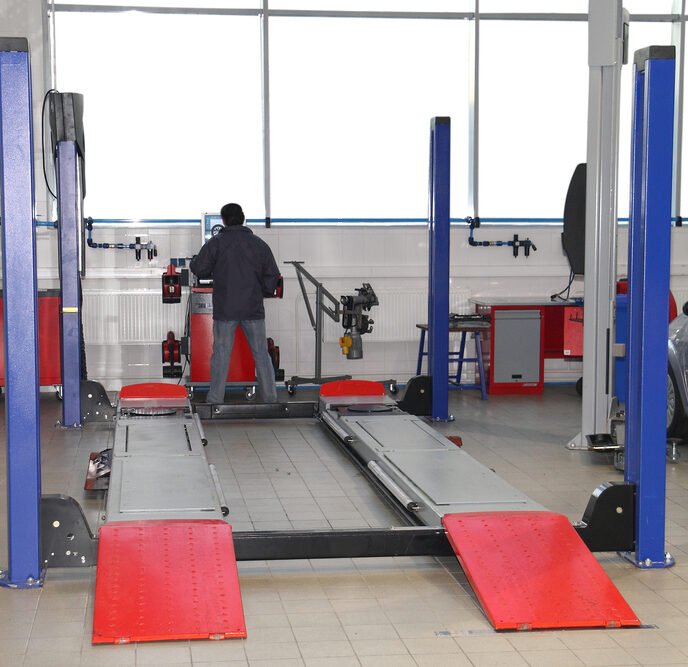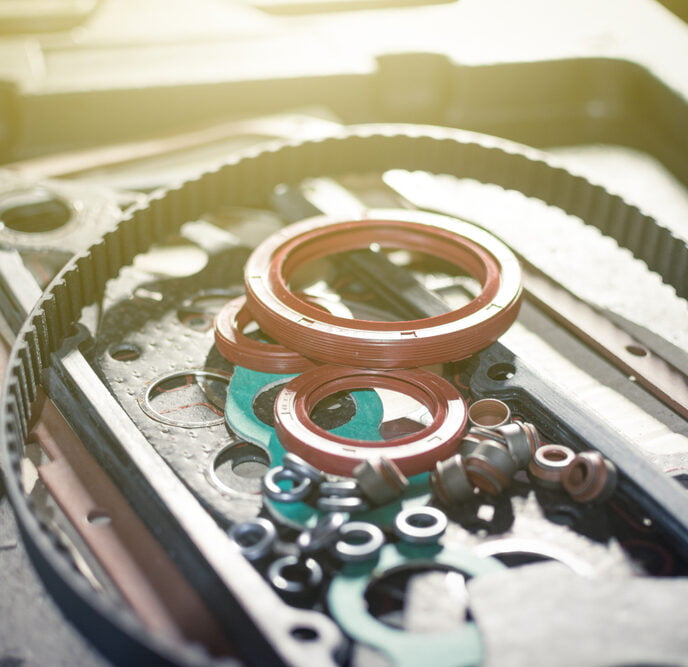How Long Do Scissor Lift Batteries Last?
Most technicians can pinpoint a time when their scissor lift stopped working properly, perhaps in the shop or in a personal garage. When this occurs, which lift component do you check first? Most of the time, the issue can be traced back to the battery. Scissor lift batteries are an essential component of the equipment; unfortunately, they can also be the root of equipment failure.
In the following content, we will discuss how long scissor lift batteries last and look at some ways to extend these batteries’ lives.
What Are “Scissor Lift Batteries”?
Before diving into the lifespan of scissor lift batteries, let’s define our terms! What batteries are employed in scissor lifts? Most often, scissor lifts utilize rechargeable, lead-acid batteries.
As the name implies, lead-acid batteries are created with lead and sulfuric acid. Both elements are combined to produce electricity via a chemical reaction. Lead-acid batteries can be serviceable or maintenance-free.
- Serviceable lead-acid batteries require consistent maintenance and inspection to ensure fluids are at the proper levels. Serviceable batteries can be refilled.
- Maintenance-free lead-acid batteries are not manually refilled. In fact, maintenance-free batteries are never meant to be opened. Once these batteries lose their ability to recharge, the battery must be replaced.
Scissor Lift Battery Lifespan
Unfortunately, the lifespan of a scissor lift battery is consistent. In fact, battery suppliers often estimate that a scissor lift battery could last between 6 and 48 months.
Though every scissor lift battery has to be replaced eventually, scissor lift usage and scissor lift battery maintenance plays a significant role in a battery’s lifespan. For example, a battery that is maintained and hardly used could last for over 10 years.
Scissor Lift Usage
For most automotive shops, scissor lift usage is not optional. Often, during busy days, every single lift in a shop is being constantly used. Simple visual maintenance might be performed between customers, but the scissor lift is expected to be in use for hours on end. Thus, reducing scissor lift usage to extend the battery’s lifespan is often not an option.
Alternatively, scissor lifts for personal use are often not as worn, allowing a well-maintained battery to retain its life for a longer period of time.
Scissor Lift Battery Maintenance
Battery maintenance should be performed regularly.
1. Ensure that all battery posts and cables have a secure connection. To make sure all battery posts and cables are properly linked, regularly clean the battery posts and cables of any corrosive elements. An unstable connection can inhibit battery performance and cause a variety of additional problems. Terminal protectors and sealant can be added to both serviceable and maintenance-free batteries to help prevent corrosion.
2. Check the battery case for damage. Before checking the case, however, ensure the emergency button is in the “off” position.
3. Clean the entire battery with baking soda and water.
4. Top-off serviceable batteries with distilled water during use and charging cycles. It is important to note that distilled water should always be used – tap water can inhibit battery performance and increase self-discharge.
5. Use a hydrometer to check acid levels on serviceable batteries. This can be done at any time; however, resources often suggest performing this check after replenishing the water levels to examine acid levels consistently.
6. While the battery is charging, perform a charge test. A charge test ensures that every battery is working properly. If a battery has to be replaced, it is better to perform the replacement during a charge cycle than while in operation.
7. Clean battery tanks. Keeping battery tanks clean reduces surface discharge.
8. Perform an amp-draw test. The amp-draw test ensures that the battery is performing as it should, according to its’ proper specifications. To properly check scissor lift battery performance, a carbon pile battery tester or another high-quality battery tester will be required.
Unfortunately, every scissor lift battery will lose the ability to recharge and operate efficiently eventually. However, performing simple maintenance on a regular basis can extend the lifespan of your batteries.
SVI: Diverse Automotive Lift Parts Provider
When your scissor lift fails, having a trustworthy equipment provider on-call is essential to keep operations running smoothly and efficiently. At SVI, we are known for our reliability, innovative solutions, and superb customer service.
With over 40,000 products, our diverse product line serves as a one-stop shop for equipment parts, lifting equipment, fluid delivery products, RELS brake lathes, and so much more.
We know that downtime can be costly, so our 3 ready-ship warehouses provide on-time delivery and same-day shipping for in-stock parts.
An SVI specialist would love to get in touch about serving your needs, including any questions or concerns you may have. To get in touch, give us a call at (800) 321-8173 or complete our online contact form. We always respond quickly!


